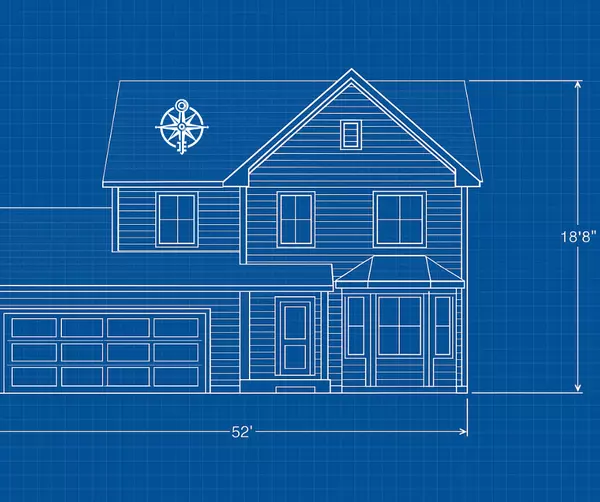Why Some Homes Linger on the Market

In the dynamic world of real estate, some homes seem to attract buyers like moths to a flame, while others languish on the market for what feels like an eternity. For both buyers and sellers, understanding why certain properties linger can provide valuable insights into market trends and decision-making processes. In this blog, we’ll delve into the various factors that contribute to a home’s extended time on the market and what it means for everyone involved.
**Pricing Strategies: The Cornerstone of Selling**
One of the most significant reasons a home may sit unsold is its price point. Sellers often have an emotional attachment to their properties, which can lead them to overestimate their home’s value. Pricing a home too high can deter potential buyers who are comparing similar properties in the area. Real estate agents typically conduct a comparative market analysis (CMA) to determine an appropriate listing price based on recent sales in the neighborhood. Homes that are priced competitively tend to attract more interest and sell faster.
Conversely, homes that are priced too low may raise red flags for buyers, leading them to wonder if there is something wrong with the property. Sellers should work closely with their real estate agents to ensure they set a price that reflects both market conditions and the true value of their home.
**Condition of the Property: First Impressions Matter**
The condition of a home plays a crucial role in its marketability. Buyers are often looking for move-in-ready properties that require minimal repairs or renovations. Homes that show signs of neglect—such as peeling paint, outdated fixtures, or landscaping issues—can be off-putting. Sellers should consider investing in minor repairs or staging their homes to enhance appeal. A well-maintained property not only attracts more interest but can also command a higher selling price.
Additionally, homes that fail inspection due to significant issues can also linger on the market while sellers scramble to make necessary repairs or adjustments. Buyers tend to shy away from homes with known problems unless they are looking for a fixer-upper.
**Location, Location, Location: The Impact of Neighborhood Dynamics**
The location of a property is another critical factor influencing its desirability. Homes situated in neighborhoods with high crime rates, poor school districts, or limited access to amenities may struggle to find buyers. Conversely, properties located near desirable schools, parks, and shopping areas typically see quicker sales.
Market trends also play a role in location desirability. If an area is experiencing economic downturns or shifts in demographics, it could impact buyer interest significantly. Sellers should remain informed about local developments and consider how these factors may affect their property’s appeal.
**Marketing Efforts: Getting the Word Out**
Effective marketing is essential in today’s competitive real estate landscape. Homes that lack proper marketing exposure may not reach potential buyers effectively. High-quality photos, engaging descriptions, virtual tours, and social media promotion are all vital components of modern real estate marketing strategies.
Sellers should collaborate with their real estate agents to develop comprehensive marketing plans tailored to target specific buyer demographics. Properties marketed through multiple channels will likely garner more attention and reduce time spent on the market.
**Seasonal Trends: Timing Can Be Everything**
Real estate markets often experience seasonal fluctuations that can impact how long homes remain unsold. For instance, spring and summer months generally see an uptick in buyer activity as families prefer moving during school breaks. Conversely, winter months can lead to slower sales as fewer buyers are actively searching for homes.
Sellers should consider timing when listing their properties; understanding local seasonal trends can help optimize selling opportunities and align with buyer demand.
**Market Conditions: The Bigger Picture**
Finally, broader economic factors can influence how quickly homes sell—or don’t sell—in any given area. Interest rates play a significant role; when rates rise, potential buyers may be discouraged from entering the market due to increased borrowing costs. Additionally, economic uncertainty or fluctuations in job markets can lead consumers to hesitate before making significant financial commitments like purchasing a home.
Staying informed about current real estate news and trends allows both buyers and sellers to adapt their strategies accordingly.
**Conclusion: Navigating the Real Estate Landscape**
Understanding why some homes linger on the market requires analyzing various factors ranging from pricing strategies and property condition to location dynamics and effective marketing efforts. By recognizing these elements, sellers can take proactive steps toward enhancing their property's appeal while buyers gain insight into navigating their purchasing decisions effectively.
In this ever-evolving real estate landscape, knowledge is power—whether you’re buying your first home or looking to sell your current one!
Recent Posts











"Real estate isn't about money for me, its about serving my community. I can't wear the uniform anymore, but I can use every resource at my disposal to educate the people around me and advocate on their behalf. My mission is to spread success to everyone I meet, its not sales...
its Real Estate with Purpose".
617 N Mulberry St #105B, Elizabethtown, KY, 42701, USA

